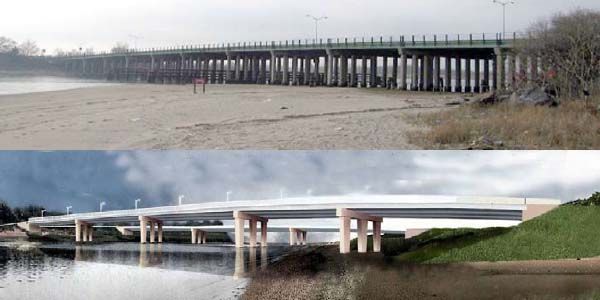Belt Parkway Boondoggle: Lane Closures Begin Today

At 10:00 p.m. tonight, Department of Transportation workers will shut down lanes in both directions of the Belt Parkway, moving forward with a seven-year renovation plan of the highway’s bridges and overpasses.
The first lane closures will occur between the Fresh Creek and the Paerdegat Bridges. The closures – which occur during nights, weekends, and non-rush hour afternoons – are required for the installation of temporary concrete barriers, lighting, and paving and the removal of existing lighting systems and median guiderail. The expected duration of this phase of work is 6 to 8 weeks.
Below is the schedule of lane closures during the first 6 to 8 week phase:
Lane Closures:
|
Weekdays
|
Weekends
|
| PLEASE NOTE CAREFULLY (A.M.) AND (P.M.) HOURS! |
The closures are the latest phase of Belt Parkway renovation, which began surrounding the Fresh Creek, Rockaway Parkway, and Paerdegat Basin Bridges in late 2009. Four more bridges will be overhauled in the coming years, with all work planned to conclude by the end of 2016. The other structures targeted by the project include the Nostrand Avenue Bridge, Gerritsen Inlet Bridge, Mill Basin Bridge, and Bay Ridge Avenue Bridge.
Work on the Gerritsen Inlet and Mill Basin Bridges will kick off mid-2010, while the Nostrand Avenue and Bay Ridge Avenue Bridges are slated for the second half of 2012, according to DOT documents (pdf).
The plans show the DOT is emphasizing increased safety, traffic flow, design aesthetics, and environmental protection as they go forward with the project.
Though the three bridges currently being worked on are the largest projects, commuters and boaters will likely experience the largest impact at the Mill Basin Bridge. Built circa 1940, the drawbridge has a 35-foot clearance. The new bridge will be a fixed structure with a 60-foot clearance. Lanes will be expanded by half a foot, and safety shoulders will be added in both directions. A new fender system will be installed to protect the bridge substructure from marine traffic.
Sheepshead Bay residents will also see benefits from the Nostrand Avenue overpass renovations. Currently the support columns of the three span structure blocks the view of car traffic underneath. The proposal aims to turn it into a single span, removing the supports to improve sight lines. Nostrand Avenue will be widened and realigned. Meanwhile, on the Belt itself, the road will be widened to provide safety shoulders, parapets will be installed, and the corrugated metal guide rails will be replaced with a reinforced concrete median.
At Paerdegat Basin, the entire structure will be demolished and two new roadways will be built. New approach lanes will be constructed on new alignments, improving sight distances, and the eastbound bridge will have a dedicated bike lane. The existing bridge will remain in service until the new structures are built, and will then be demolished.
As six of the seven bridges sit alongside Gateway National Reserve, the DOT is also making a commitment to protecting the sensitive environment.
DOT will comply with Department of Environmental Protection requirements for the initiation of a long-term plan to increase wetlands, decrease pollution into the bay, and decrease the highways footprint around the rim of Jamaica Bay. An off-site mitigation plan has also been approved, focusing on compensating for wetland losses by increasing and improving the quality of habitats. Approximately 2.3 acres of land at Floyd Bennett Field will be cleaned of rubbish and debris and converted to wetland area.
For more details about the changes, check out the DOT’s plans (pdf), as well as GerritsenBeach.net’s report.






